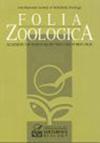花园睡鼠体内寄生虫、博纳病病毒及遗传变异的临床检查方法及调查
Q2 Agricultural and Biological Sciences
引用次数: 1
摘要
摘要针对欧洲大部分地区花园睡鼠数量持续下降的现状,从德国黑森州和莱茵兰-普法尔茨州的156只活鼠中收集了其遗传多样性、体重、体型和寄生虫负担等数据。异氟醚氧麻醉下分别从前腔静脉和颈静脉采血。记录动物性别、体重、胫跖和尾长。对毛发样本进行遗传分析(n = 64),对口腔、眼部和肛门拭子进行病毒检查(n = 156),对粪便样本进行寄生虫学检查(n = 57)。线粒体DNA遗传分析显示研究区有3个单倍型(WE4, WE4-3, WE5)。微卫星分析表明,黑森州和莱茵兰-普法尔茨州的个体遗传多样性较高,等位基因重叠66%,遗传距离较低(DJost为5.6%),分化指数较低(FST = 0.02)。所有拭子样本均为博纳病病毒阴性。在47%的粪便样本中检出内阿米巴原虫囊、艾美耳虫卵囊以及吸虫、囊虫(膜膜绦虫属)和线虫(毛线虫属、强线虫属)卵。据我们所知,这是首次报道在活的花园睡鼠中进行吸入麻醉、临床检查、采血和博纳病病毒评估。本文章由计算机程序翻译,如有差异,请以英文原文为准。
Clinical examination methods and investigation into the occurrence of endoparasites, Borna disease virus and genetic variability in the garden dormouse, Eliomys quercinus
Abstract. Facing the ongoing decline in garden dormice (Eliomys quercinus) in large parts of Europe, data about genetic diversity, weight, size, and parasite burden were collected from live individuals (n = 156) from Hesse and Rhineland-Palatinate, Germany. Blood was collected under Isoflurane-oxygen-anaesthesia from the anterior vena cava or jugular vein, respectively. Sex, weight, tibiotarsal and tail length of all animals were recorded. Genetic analysis (n = 64) using hair samples, viral examinations of oral, ocular and anal swabs (n = 156) and parasitological examination of faecal samples (n = 57) were performed. Genetic analysis of mitochondrial DNA revealed three haplotypes in the study area (WE4, WE4-3, WE5). Microsatellite analysis demonstrated a comparably high genetic diversity with 66 % overlap of alleles, a low genetic distance (DJost 5.6 %) and a low index of differentiation (FST = 0.02) between individuals from Hesse and Rhineland-Palatinate. All swab samples were negative for Borna disease virus. In 47 % of the faecal samples Entamoeba sp. cysts, Eimeria sp. oocysts, and eggs of trematodes, cestodes (Hymenolepis spp.) and nematodes (Capillaria spp., Strongylida) were detected. To our knowledge, this is the first report of inhalation anaesthesia, clinical examination, blood collection and assessment of Borna disease virus in living garden dormice.
求助全文
通过发布文献求助,成功后即可免费获取论文全文。
去求助
来源期刊

Folia Zoologica
生物-动物学
CiteScore
1.70
自引率
0.00%
发文量
0
审稿时长
3 months
期刊介绍:
Information not localized
 求助内容:
求助内容: 应助结果提醒方式:
应助结果提醒方式:


